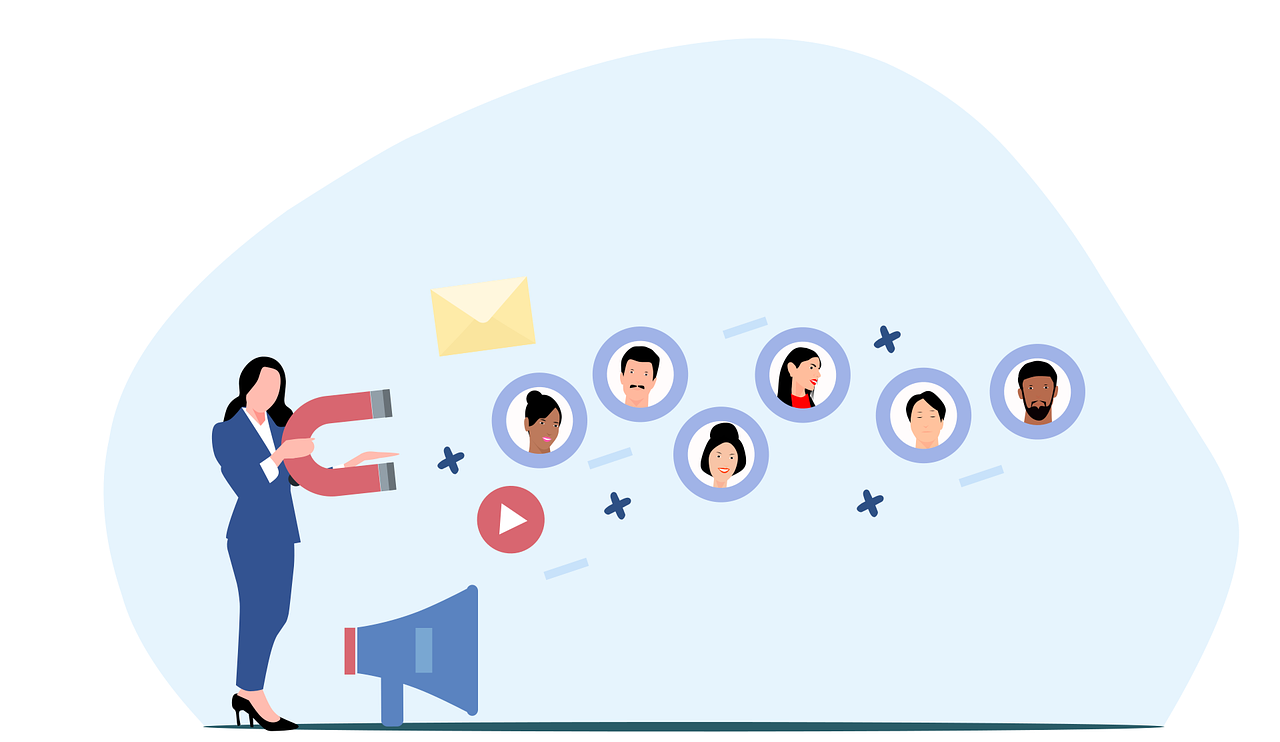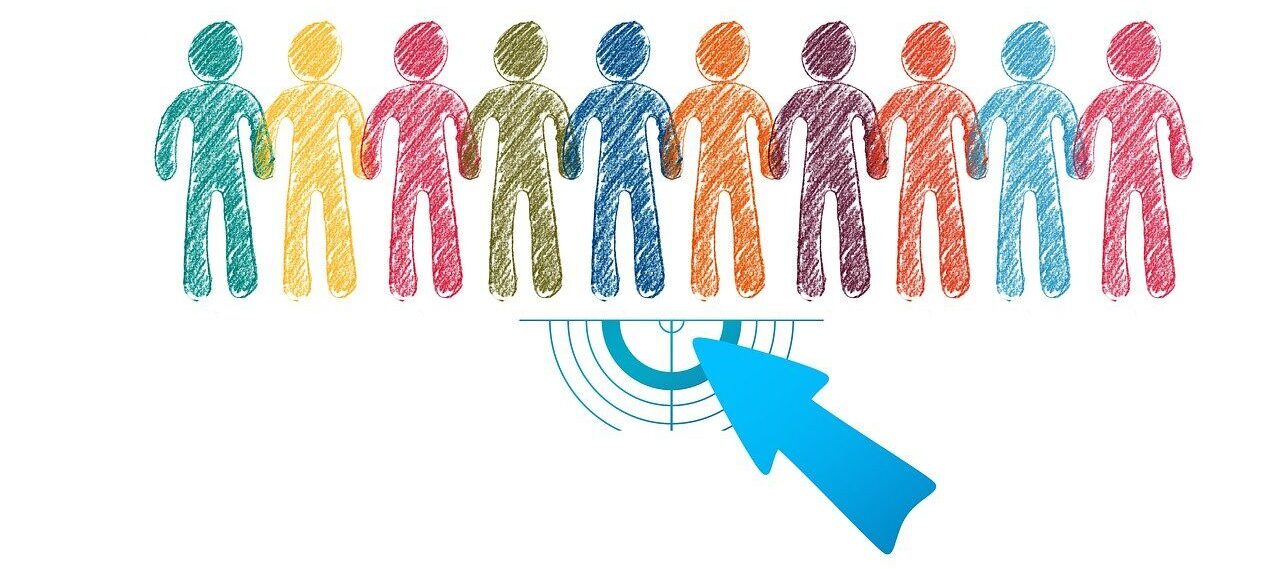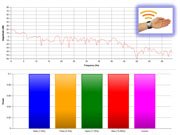
Mar
Can Psychographic Segmentation Help Financial Services Companies?
jerry9789 0 comments Brand Surveys and Testing, Burning Questions
Why Is Market Segmentation Effective?
By now you’ve most likely come across the idea that instead of using the “blanket” approach for marketing by using demographic or geographic data, you and your marketing goals can be better served by identifying your ideal customer and then focusing and tailoring your marketing campaign towards that consumer. This is achieved through a high-quality segmentation study and persona development, as was the case with the “Strivers” and “Empath” personas in our Banner Bank and Capital One case studies, respectively.
To sum it up, when we developed a brand model identifying “Strivers” as the primary segment Banner Bank should focus on, they were able to not only meet but also exceed all key Striver product targets system-wide after two years of implementing the program. Also, we recommended Capital One focus their brand campaign efforts for a personal investment mobile app on the pragmatic thinking type “Empath,” resulting in a highly successful new product introduction. You can learn more about these two case studies and how great research can help financial services companies here.
By recognizing your profit-optimal customer through market segmentation, a financial services company can effectively focus its marketing efforts and resources, optimizing or helping drive down costs, while at the same time engaging more efficiently with the consumer, enhancing satisfaction and loyalty.
But what if we tell you that you can also segment your financial services market so you target not one but different groups of customers?
Copyright geralt (Pixabay)
Single-segment Focus vs. Multi-segment Strategies
“Now hold on a minute,” you might say in your mind as you read that last line. “Didn’t you just say at the beginning of this that identifying your best customer is better than the ‘blanket’ approach?”
Yes, we did say that but no, this is no “blanket” approach. The main reason a financial services company wants to complete market segmentation research is so they can gain actionable insights into how to sell more of their products or services. With high-quality segmentation studies, breaking down your financial services market into different groups uncovers a variety of insights allowing you to craft and leverage different marketing strategies toward these segments. With this data-driven approach, customer segmentation helps financial services companies decide how to offer a customized journey to different kinds of consumers. It also provides the opportunity to tap into niche segments, which are usually smaller groups with considerable potential.
Think of it this way: instead of a blanket, what you have is a different set of marketing playbooks for your various customer segments. The blanket covers primarily the “who” of your market; each of your playbooks identifies not only “who” they are for but also deep dive into answering questions like “what” type of buyer behavior they have, “why” they behave this way, and “how” best to approach and engage them.
Copyright Gerd Altmann
Why Use Psychographic Segmentation?
Generally, four types of market segmentations can provide a financial services company with actionable segments: Geographic Segmentation, Demographic Segmentation, Behavioral Segmentation, and Attitudinal or Psychographic Segmentation. Out of these four, we’ll be focusing on Attitudinal or Psychographic Segmentation, as it is often considered the most useful way to segment an audience.
Attitudinal or Psychographic Segmentation separates customers by how they think and feel, their attitudes and values. Essentially, it aims to become a window into a buyer’s thought process. It is often considered the most useful segmentation approach because it provides the clearest actionable steps for a company to take as they try to target each segment.
Not only do you gain a deeper understanding of who your customer is, but your financial institution can map out the customer journey more effectively and efficiently with Psychographic Segmentation. It also allows the financial services company to recognize opportunities to offer different or new products/services in response to changes in consumer behavior. In addition to improved customer satisfaction and retention resulting from a client feeling valued, a financial institution that effectively engages with its consumers can also enjoy increased brand perception, helping with word-of-mouth and referrals as well as stand out from the competition.
Segmentation study data can come from several sources including survey data, observational data, public panel data, customer relationship management (CRM) databases, and even large-scale public databases such as Data Axle (previously InfoUSA), Experian, LiveRamp (previously Acxiom), and the like. It’s also possible to append demographic and behavioral data to your company’s house list. A financial services company is already sitting on a large pool of customer data; while it’s easy to go down the route of Geographic or Demographic Segmentation when analyzing all that information, converting those data into actionable insights with Psychographic Segmentation would lead to more personalized and meaningful buyer experiences.
Whether it’s for single or multiple segments, Psychographic Segmentation studies can tell you why a particular marketing or messaging approach to a particular segment is likely to be profitable. They can also tell you how to make adjustments toward more effective approaches when the standard approaches are not working. There are many financial services companies that tried demographic targeting and were disappointed with the results, then switched to psychographic targeting and found that their messaging strategies produced much higher rates of response and conversion.
Copyright Andrea Piacquadio
Cascade Strategies combines the most advanced AI and machine learning tools with market research expertise from over three decades of experience. Let us help your financial services firm convert your customer data into valuable, real, and actionable business insights. Don’t settle for a simple breakdown of your customer data; our experienced team strives for genuine breakthroughs by imaginatively interpreting all that complex quantitative segmentation data. We can also develop creative briefs that can be used for your advertising and website strategy based on the segments we discover, as well as tackle practical tasks, such as predicting the likely revenue to flow from campaigns directed toward specific consumer segments and measuring the actual monetary effectiveness of such campaigns. Contact Cascade Strategies today to see how our approach to segmentation studies can give you real business insights.

Nov
The Importance of Psychographic Segmentation in Brand Building
jerry9789 0 comments Brandview World, Burning Questions
What Is Psychographic Segmentation?
![]() So you’ve completed your research on the demographics of your online perfume store and you’ve seen that women in their twenties in Seattle were your top buyers. That’s great, you thought as your mind started to work on the outlines of your next campaign targeted towards these women. However, you discovered upon going through the data one more time that your perfumes are just as popular with forty-something-year-old women in Las Vegas. And when you went to double-check again you discovered another group of women around 25 years old being ardent supporters of your perfumes, but this time they’re from New York.
So you’ve completed your research on the demographics of your online perfume store and you’ve seen that women in their twenties in Seattle were your top buyers. That’s great, you thought as your mind started to work on the outlines of your next campaign targeted towards these women. However, you discovered upon going through the data one more time that your perfumes are just as popular with forty-something-year-old women in Las Vegas. And when you went to double-check again you discovered another group of women around 25 years old being ardent supporters of your perfumes, but this time they’re from New York.
Now how do you go about your marketing given that you would need to adjust it to target your top demographic? Sure, you’ve identified your best patrons as women between 20 and 50 years old but aside from the different locations, you’re not quite sure now what else sets them apart, which could poke holes in your messaging and cause it to fail to resonate with a number of them.
This exercise shows you the limitations of demographic-based marketing. Demographics answer the question “Who are your buyers?” but in order for your efforts to become more effective, you need to go deeper by answering “Why are they buying?” And this is where psychographic segmentation comes in.
Psychographic segmentation is the process of grouping consumers according to their motivations, goals, attitudes, opinions, beliefs and other psychological factors. It helps you better understand what drives purchase decisions. Not only does psychographic segmentation allow you diversify your marketing and reach out to different groups of consumers, it also allows you to create or customize products or services to cater to the varying needs of your buyers.
Copyright Elf-Moondance (Pixabay)
Why is Psychographic Segmentation Important in Brand Building?
Going back to the earlier scenario, you decided to reach out to your target demographic through an online survey, explaining it would help you understand them and serve their needs better. Based on the responses you received, you discovered that these women between 20 and 50 years old from different states appreciated the sweet-smelling but unique line of perfumes you’ve been selling at cost-effective pricing with efficient delivery times. Thus, the messaging of your next campaign highlighted the popularity of your sweet-scented perfumes, competitive pricing, and quick delivery. And the next time the opportunity presented itself, you even went as far as offering free delivery for a limited time.
Because you’ve used psychographic segmentation to break your market into different groups, you’ve also become aware of your other customer segments, which opened up marketing strategies you could leverage towards these subsets. Let’s say one of these groups was composed of regular clients who — although they didn’t buy as much as the earlier group we’ve discussed — you discovered frequently bought a certain perfume. Upon further research, surveys, and interviews of some of the members of this segment, you found that you’re the only online perfume shop that carried this fragrance. This then allowed you to branch out with new marketing which put a spotlight on the fact that this hard-to-find scent could only be bought at your online store, tapping into more potential customers falling under this segment. This also opened up more research on what fragrances your competitors didn’t offer but which your brand carried as well as the development of new unique perfumes that one wouldn’t find anywhere else online.
Psychographic segmentation not only gave you an understanding of the “why” behind purchases, it also granted you actionable insights on selling more of your products. With this data-driven approach, your brand is able to create different marketing playbooks for your various customer segments. The buyer’s journey would be different per customer, but in their minds there is only one brand that’s on top when it comes to a selection of unique scents at great prices and fast turnaround time for delivery.
Copyright Mohamed_hassan (Pixabay)
What Are Psychographic Segmentation Variables?
So how do you group your market according to your psychographic segmentation data? While there are several types of psychographic data on which you could base the customer segments you’ll be forming, indeed.com listed the following as the five main psychographic segmentation variables:
1. Personality – This variable refers to the beliefs, motivations, behaviors, and overall outlook of your target audience. You can group your customers based on personality traits like creativity, sociability, optimism, empathy, etc.
2. Lifestyle – This variable focuses on the daily habits and preferences of a customer, including how they spend their time and things they consider important.
3. Social class – This variable assumes preferences based on income level and spending power. It can also influence how a product is priced or whether it should be marketed as a luxury.
4. Attitudes – This variable considers the behavior of a customer based on their background and values. An example would be an animal lover who leans towards perfume brands that are known to be cruelty-free, meaning they don’t test their products on animals.
5. AIO (Activities, Interests and Opinions) – This variable groups consumers based on what they similarly enjoy or are passionate about. The second scenario earlier where you discovered the subset of regular customers purchasing the hard-to-find fragrance is an example of this variable.
Copyright geralt (Pixabay)
Personas vs. Psychographic Segmentation
While it might be easy to confuse psychographic segmentation with personas, these two concepts are subtly different. Psychographic segmentation groups your markets according to similar psychological traits and can therefore present a whole-market picture of consumers, spanning the range from those who passionately love your market offering to those who dislike it or resist it. This whole-market look also gives you the ability to attach real numbers to the data, enabling you to do things like demand forecasting, market sizing, receptivity studies based on counts of prospects, and the like.
Personas, on the other hand, are profiles — portraits of individual persons. They are more specific, detailed, and focused. Think of a police profile of a crime suspect (just the format of it, not the content.) A well-drawn persona presents a fictionalized representation of your ideal buyer, with information about key traits of that person. You might describe these traits by saying something like “likes to splurge on expensive vacations,” or “typically employed in middle-echelon white-collar jobs like administrative staff, etc.” The persona provides a vivid description of that individual, so you can better understand how to appeal to that kind of person with marketing campaigns and other forms of brand outreach. A good persona description humanizes the data and gives it a relatable face.
Please click here to find out more about segmentation studies, including some interesting case histories. Cascade Strategies has for over three decades been assisting top US and international companies with high quality market research and superior thinking in identifying and focusing on their most profit-optimal consumers. If you would like to find out more, or learn how Cascade Strategies can help provide brand development research for your specific marketing needs, feel free contact us here.

Jun
Appropriate Use of AI
jerry9789 0 comments artificial intelligence, Brand Surveys and Testing, Brandview World, Burning Questions
The Rise Of AI
Believe it or not, Artificial Intelligence has existed for more than 50 years. But as the European Parliament pointed out, it wasn’t until recent advances in computing power, algorithm and data availability accelerated breakthroughs in AI technologies in modern times. 2022 alone made AI relatively mainstream with the sudden popularity of OpenAI’s ChatGPT.
But that’s not to say that AI hasn’t already been incorporated in our daily lives- from web searches to online shopping and advertising, from digital assistants on your smartphones to self-driving vehicles, from cybersecurity to the fight against disinformation on social media, AI-powered applications have been employed to enable automation and increase productivity.
The Woes Of AI
However, the rise of AI also brings concerns and worries over its expanding use across industries and day-to-day activities. Perceived negative socio-political effects, the threat of AI-powered processes taking over human employment, the advent of intelligent machines capable of evolving past their programming and human supervision- that last one is mostly inspired by the realm of science fiction but a plausible possibility nonetheless. A more grounded and present-day concern, however, is the overreliance and misuse of Artificial Intelligence.
Copyright geralt (Pixabay)
Sure, AI is able to perform a variety of simple and complex tasks by simulating human intelligence, efficiently and quickly producing objective and accurate results. However, there are some activities requiring discernment, abstraction and creativity, where AI’s approximation of human thinking falls short. Cognitive exercises like these not only need high-level thinking but also involve value judgments honed and subjected by human experience.
The Expedia Group Case Study
This brings us to our case study for the Expedia Group, whose brand has around a million hospitality partners. Their goal is to increase engagement with their partners. For five years, Expedia grouped their lodging partners, which at the time were mostly chain hotels, with a segmentation model that helped guide their partner sales teams on how they should prioritize spending their time. This “advice” Expedia provides comes through marketing, in-product or through the partner’s account manager. When a partner takes advantage of Expedia’s advice, they usually receive the booking over their competitor.
Copyright geralt (Pixabay)
Now you can imagine that Expedia has thousands of advices or recommendations to give their partners. So how does Expedia determine which recommendation will most likely push their partner to act accordingly and produce optimal revenue?
If you answered “Use AI,” you’re on the right track. With thousands of possible decisions, Expedia just wants AI to filter the bad choices and boil it down to a few but good recommendations optimizing revenue. Expedia wants to use AI to help with decisions, but it doesn’t want AI to make that decision for them or their partners.
Copyright Seanbatty (Pixabay)
But now things are different- Expedia’s partners have grown to also include independent hotels and vacation rentals. So what if Expedia adds additional dimensions to the model allowing them to target partners with recommendations that would be best for their way of thinking and feeling, as well as appeal to their primary motivations as a property?
So that’s exactly where Cascade Strategies stepped in. We followed a disciplined process where — just to name a few things we’ve performed — we interviewed 1200 partners and prospects across 10 countries in 4 regions, converted emotional factors into numeric values and used advanced forms of Machine Learning to arrive at optimal segmentation solutions. Through this five-step disciplined process, we built them a psychographic segmentation formed into subgroups based on patterns of thinking, feeling and perceiving to explain and predict behavior.
Copyright Pavel Danilyuk
It “conceived the game anew” for Expedia Group (in a way suggested by Eric Schmidt and company in their book The Age of AI: And Our Human Future). Now seeing their partners in a different light, they needed to evolve their communications to reflect the new way they view them with the end goal of targeting which segment with which offer. The messages they would deploy should be very action-oriented based on what compels each segment.
Cascade Strategies then created an application called Scenario Analyzer to make this easy for people at Expedia. Its users could just ask the Scenario Analyzer what’s the optimal decision for certain input conditions. Basically, a marketer selects a target group and a region then the Scenario Analyzer answers by saying “You could do any of these six things and you’d make some money. It’s your call.”
If the partner does nothing, Expedia still makes about $1.5 million from these partners during a 90-day period, which is part of their regular business momentum. However, if the partner acts on the top-ranked recommendation which carries the message “Maximize your revenue potential by driving more groups or corporate business to your property,” it would result in about $140,000 more during the same period, which is about a 1% gain. While we couldn’t reach all partners with the same message, causing us to lower our expectations a little, we did slightly better than we expected to do in the end.
The “Appropriate Use” of AI
So what did we did do? We made “Appropriate Use” of AI. It neither made the decision nor guaranteed the money. It warded off the worst ideas and told us which recommendation was best in comparative terms.
Many people in marketing are treating AI as the next cool thing, so they want to jam it in wherever they can, whether it’s helpful or not. “Appropriate Use” stands against that, saying the best way to apply AI to marketing is for Decision Support to remain under human discretion and judgment, instead of letting AI actually make choices.
We think AI can at times be a very poor decision maker but a very good advisor. And we’re not alone as many others share our concern; to illustrate, 61% of Europeans look favorably at AI and robots while 88% say these technologies require careful management.
Another example to consider when thinking about just how important human intervention is when it comes to the “Appropriate Use” of AI is the topic of health care. As noted by frontiersin.org, the legal and regulatory framework may not be well-developed for the practice of medicine and public health in some parts of the world. Throwing artificial intelligence into the mix without careful and thoughtful planning might underscore or aggravate existing health disparities among different demographic groups.
And this is part of the reason why we believe in shaping AI with human values, including the dignity and moral agency of humans. The “defining future technology” that is AI is already proving to be a powerful tool for providing solutions and achieving goals, but it can only unlock levels of excellence, innovation and integrity when guided appropriately by human values and experience.
Other interesting reads:
https://www.wgu.edu/blog/what-ai-technology-how-used2003.html#close
https://www.investopedia.com/terms/a/artificial-intelligence-ai.asp




















